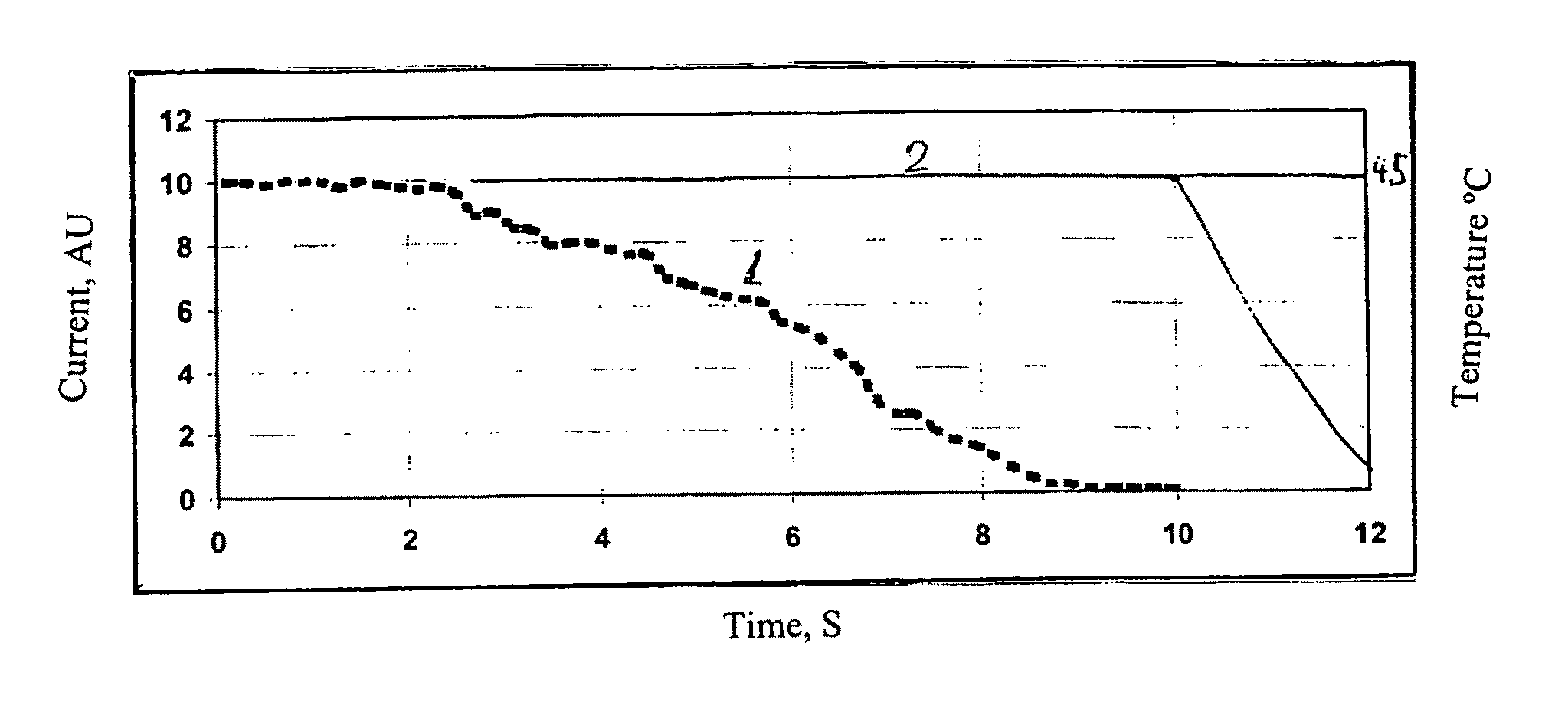Portable laser and process for pain research
a laser and portability technology, applied in the field of medical instruments and processes, to achieve the effect of reducing the beam divergen
- Summary
- Abstract
- Description
- Claims
- Application Information
AI Technical Summary
Benefits of technology
Problems solved by technology
Method used
Image
Examples
example 1
Pin Prick Pain to Activate A Delta Fibers
[0110]It is well known that for heat induced simulation of prick-pain stimulation the temperature of the skin has to be more 46-48 C degree and ramp of heating has to be over 70-100 C degree per second. However, these data were based on pulse durations of more than 300 ms. To the best of Applicant's knowledge, there are not any prior art data in the literature relating absolute temperature and ramp of heating for stimuli duration less than 300 ms. The best, simplest protocol, to access A-delta nociceptors and evoked monomodal pin prick pain is the following:[0111]The best laser set up parameters for lasing of 980 nm:[0112]Pulse duration: 50-150 ms,[0113]Beam size: 0.5-2 mm[0114]Power: 2-20 W[0115]Density of Energy Range: 14 mJ / mm2
[0116]The example of practical realization of the combination of pulse duration, beam size and pulse power for threshold pin prick pain stimulation is shown in Table 1:
[0117]
TABLE 1Example of Threshold of Single Pin...
example 2
Protocol of Selective Stimulation
Single Warmth Sensation or / and Single Hot Pain, Activation of C Fibers
[0129]Warmth sensation Stimulation
[0130]The best laser set up parameters for laser at 980 nm:[0131]Pulse duration: 300 ms to 20 s[0132]Beam size: 3-15 mm[0133]Power: 0.3-10 W[0134]1) A collimated beam with diameter 5 mm, power 1 W and pulse duration 5 sec is applied to investigate area of skin to determine the individual sensitivity of C nociceptors. The lasing is stopped when patient or volunteer report feeling either warmth or hot (burning) pain. The duration of applied pulse is measured. The procedure is repeated 2-3 times and after which the obtained pulse duration is used for the investigation of other areas. Every next pulse is applied to new area of skin if pain or other sensation has not disappeared.[0135]2) The expected pulse duration is between 300 ms and 5 sec. A 300 ms power is increased with step of 0.2 W until the appropriate sensation appears. If the sensation doesn'...
example 3
Application of Protocol Example 2 for Healthy Volunteers
[0146]The best laser set up parameters for laser at 980 nm:[0147]Pulse duration: 300 ms to 20 s,[0148]Beam size: 3-15 mm[0149]Power: 1-10 W[0150]Density Energy Range 9-140 mJ / mm2
[0151]
TABLE 2Example of threshold Hot Pain and Warmth StimulationsPulseAreaEnergyPowerType ofduration,size,Energy,Density,Density,sensationmsmm2Power, WmJmJ / mm2W / mm2warmth30038.54.7141036.60.122warmth300176.65.817409.80.033warmth130012.71.11430112.60.087Hot Pain30038.55.8174045.20.151Hot Pain130019.622600132.70.102andwarmth
PUM
 Login to View More
Login to View More Abstract
Description
Claims
Application Information
 Login to View More
Login to View More - R&D
- Intellectual Property
- Life Sciences
- Materials
- Tech Scout
- Unparalleled Data Quality
- Higher Quality Content
- 60% Fewer Hallucinations
Browse by: Latest US Patents, China's latest patents, Technical Efficacy Thesaurus, Application Domain, Technology Topic, Popular Technical Reports.
© 2025 PatSnap. All rights reserved.Legal|Privacy policy|Modern Slavery Act Transparency Statement|Sitemap|About US| Contact US: help@patsnap.com



